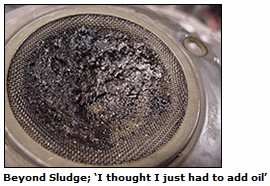OIL CHANGES
NORMAL SERVICE VS. SEVERE SERVICE
There are two types of maintenance schedules for automobiles. One is called normal service and the other is severe service. Most people may think their driving conditions are normal but severe service applies if: the vehicle is often driven in stop and go traffic, the average trip is less than 10 miles, the vehicle is used for towing, much of the driving is in the mountains, driving is done on dusty roads.
Sludge Formation
Short drives and infrequent oil changes are two factors that lead to the formation of sludge in an engine. Sludge is a gelling of the oil that can lead to engine failure. Modern engines have close tolerances and aren’t well lubricated by thick gooey oil. Synthetic oil is more resistant to sludge formation.

Recommended Oil Change Intervals
In most instances of severe service, the recommended interval for changing oil is 3 months or 3,000 miles. When the engine is running, some unburned fuel and combustion byproducts are forced past the piston rings and into the crankcase where they are absorbed by the oil. As the engine wears, this blowby increases. Also, short trips combined with stop and go driving and excessive idling increase the contaminants. Motor oil contains detergent additives that neutralize the blow-by contaminants, but above 3,000 miles the detergents can begin to break down. Combustion creates dirt and contaminants in the oil and changing the oil is the only way to get rid of the contaminants.
If most of a vehicle’s driving is highway driving with little stop and go and synthetic oil is used, the interval for oil changes could be more like 5,000 to 7,500 miles, but most of us don’t drive under those conditions.
When we perform an oil change we include a 35 point courtesy inspection and set tire pressure to the vehicle’s specification.
